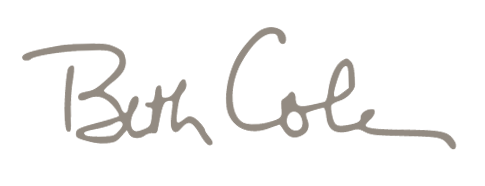Painting Outside - Part I
/Painting Plein Air
by Beth Cole
Since the weather is getting warmer I wanted to write about plein air painting, a fancy term for painting outside. I think there are two acceptable pronunciations for the word “plein” – “plane” or “plen." The word comes from the phrase "en plain air" - in French meaning “in the open air.” And we do love the open air, don’t we?
I am not an expert on plein air painting, but I do enjoy it and one of my goals this year is to do more of it. I definitely need the practice!
This post is all about the basics of what you’ll need to paint outside. In the coming weeks I will also write about finding locations and the benefits of outdoor painting, including why we should even try.
Idea Checklist for Painting Outside – the Basics
This is my checklist that I keep in my art studio that reminds me of everything I need before I leave. Others may have different recommendations, but this is what works for me.
- Tripod – I have a Manfrotto tripod that I use for plein air painting and for photography.
- Easel and Palette – I bought an easel and palette from En Plein Air Pro to get me started, it is cost effective and it works great. The downside is the bulkiness. I haven’t figured out a way to carry it very well, but I like how the palette is covered with a lid so the paint keeps very well between outings.
- Oil Paints – Because my palette has a lid, I usually squirt the paints I will need on the palette before I leave. I take extra tubes of those colors as well, usually in a large plastic bag that fits in my backpack. I have been experimenting with a new palette this year, so this is what I will plan to take: Alizarin Crimson, Cadmium Light Yellow Pure, Prussian Blue, Dioxazine Purple, Raw Umber, Burnt Sienna, Titanium White
- Odorless Mineral Spirits – I use Gamsol in a covered steel container with a tight lid so it won’t spill.
- Palette Knife – for mixing - don’t forget this!
- Brushes – you will need a range of brushes, trust your instincts. You will most likely be working on a small canvas so you don’t need the huge brushes.
- Paper Towels – always needed, sometimes I take tissues as well.
- Plastic bag for trash – important!
- Painting Apron – I’m the messiest painter.
- View Finder – this will help you narrow in on the composition and focal point. This is the one I use, available from Blick or Amazon.
- Small Canvases – I usually take several 8 x 10 canvases that have been prepped with a wash. I don’t like painting on white.
- Sketch Book – You will want to do a few thumbnail sketches before you start.
- Tombow Value Markers – for the thumbnail sketches. I have ones like these.
- Pencil – for sketching your ideas.
- Bug spray – yes.
- Sunscreen – double yes.
- Water – oh yes, we are thirsty out in the open air
- Phone or camera – to help you remember your scene
- Umbrella (optional) – I bought one but I’m not sure I would recommend it after it has blown over several times. Ugh. If you have one you love, please comment, I’m open to suggestions! I usually try to find a shady spot and forego the umbrella. I have also used the back hatch of my car as shelter when there are no trees around.
- Chair (optional) – I like to stand when I paint.
Believe it or not, all of this fits into a standard size backpack, even the roll of paper towels. I then need to carry my tripod with the easel attached, and the palette in some way. I have placed them in a two handled shopping bag (the grocery type), or sometimes I just carry them.
This is my set up for now. I dream of other awesome gear but I try to remind myself that the most important thing is to put in the time and gain experience, not have the fanciest setup. I have seen beautiful plein air paintings from artists who used a lawn chair and their lap.
How about you, what do you like to take on your outdoor painting trips?
Next up I’ll write about finding locations. Thanks for keeping me company.
--Beth
Soli Deo Gloria

